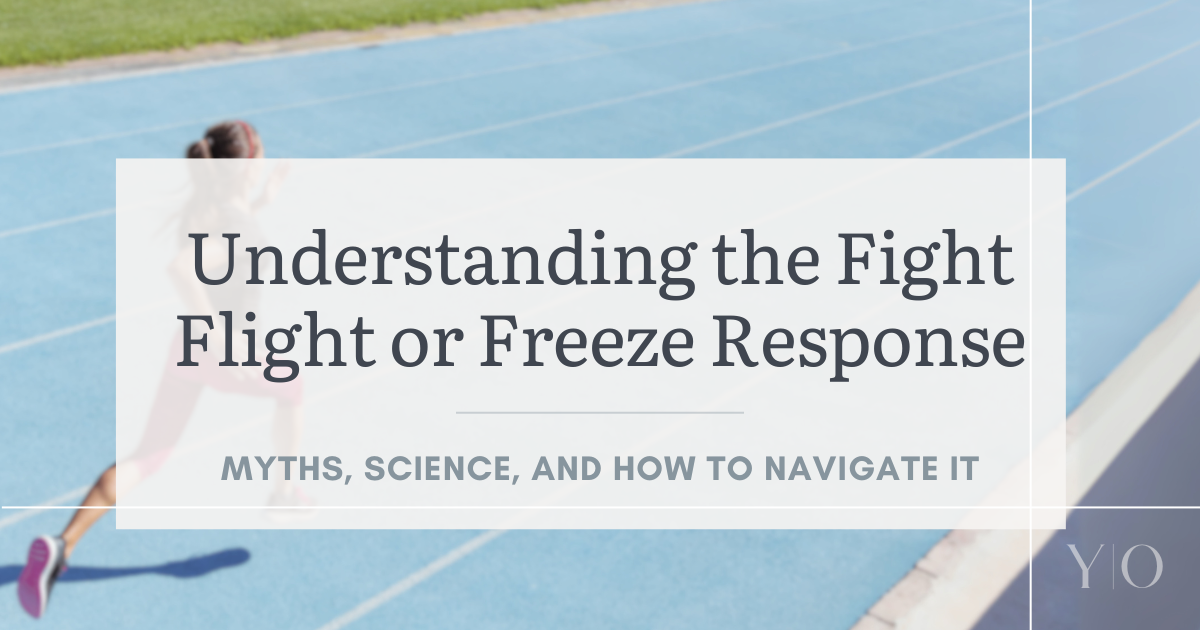Have you ever felt your heart race, muscles tense, or mind go blank in a moment of stress? That’s your body’s built-in alarm system of the fight-flight-freeze response kicking in. This automatic survival mechanism has helped humans respond to danger for thousands of years, but in modern life, it often activates in situations where physical threats are not present. While it’s a normal and necessary function, there are many misconceptions about what it is, how it works, and what we can do to manage it effectively.
Table of Contents
What Is the Fight-Flight-Freeze Response?
The fight-flight-freeze response is the body’s way of preparing to handle perceived danger. It’s an automatic reaction triggered by the autonomic nervous system, specifically the sympathetic nervous system, which releases stress hormones like adrenaline and cortisol. These changes help us react quickly whether by fighting, fleeing, or freezing.
- Fight: Your body prepares to confront the threat head-on, increasing strength, focus, and aggression.
- Flight: Your system urges you to escape, making you feel restless, jittery, or hyper-aware of your surroundings.
- Freeze: Your body temporarily shuts down movement, making you feel paralyzed or numb as it assesses the situation.
Each response serves a purpose, but in modern life, our brains sometimes misinterpret everyday stressors such as work deadlines, social conflicts, or public speaking as life-threatening, triggering this reaction unnecessarily.
Common Myths About the Fight-Flight-Freeze Response
Myth 1: You Can Control It Through Willpower
Reality: The response is automatic and happens before you consciously process the situation. While you can’t stop it from activating, you can learn strategies to regulate its effects.
Myth 2: Freezing Means You’re Weak
Reality: Freezing is a survival response, just like fight or flight. It can be a highly adaptive reaction, giving your brain time to assess danger before deciding on action.
Myth 3: The Response Is Always Bad
Reality: The fight-flight-freeze response is essential for survival. Problems arise when it’s overactive or triggered in non-threatening situations. Learning how to manage it can help you use its benefits without letting it control you.
Why Should You Care?
Chronic activation of the fight-flight-freeze response can contribute to long-term stress, anxiety, and physical health issues like high blood pressure and weakened immune function. When your body remains in a heightened state too often, it struggles to return to baseline, leading to exhaustion, mood swings, sleep problems, increased pain, and difficulty concentrating. Understanding this response can help you manage stress more effectively, improving both mental and physical well-being.
What Can You Do About It?
- Engage the Parasympathetic Nervous System
This is the body’s rest and digest system, which counteracts the fight-flight-freeze response. Techniques such as deep breathing, progressive muscle relaxation, and mindfulness can help shift your body out of high alert. - Reframe the Threat
When you feel your response activate, ask yourself: “Is this a real danger, or just a stressful situation?” Recognizing that your brain is reacting to a false alarm can help you feel more in control. - Move Your Body
Physical activity helps release built-up stress hormones and signals to your brain that the threat has passed. A short walk, stretching, or even shaking out your arms and legs can reset your system. - Build Emotional Awareness
Understanding your triggers and emotional responses can help you anticipate and manage reactions more effectively. Journaling, therapy, or self-reflection can be helpful tools. - Seek Professional Support When Needed
If your fight-flight-freeze response is interfering with daily life, therapy can help. Approaches like Acceptance and Commitment Therapy (ACT), Cognitive Behavioral Therapy (CBT) or Mindfulness-Based Therapies can provide effective tools to manage and reframe your body’s stress response.
Final Thoughts
The fight-flight-freeze response is a powerful, automatic survival mechanism, but it doesn’t have to control your life. By understanding how it works and learning ways to regulate it, you can respond to stress in healthier, more adaptive ways. Small shifts in awareness and coping strategies can help you regain a sense of balance allowing you to navigate challenges with greater ease and resilience.
By taking steps to support your nervous system, you’re not just managing stress, you’re building a stronger foundation for overall well-being.
Understanding the fight-flight-freeze response allows you to take control of your reactions, reduce stress, and enhance overall well-being. Dr. Oren emphasizes the importance of recognizing when this response is triggered and using strategies to regulate it, helping you build resilience and face challenges more effectively. Don’t let outdated myths or automatic reactions control your well-being, take proactive steps to support your nervous system, manage stress, and restore balance. Start today with mindfulness, deep breathing, or movement to calm your system. The more you practice, the better equipped you’ll be to handle stress with clarity and confidence. If you need additional support with stress, anxiety, or trauma, therapy can help. Call Dr. Oren at 775-525-8100 to begin your path to lasting relief.
Your body is wired to protect you, but you have the power to guide its response.
Please note that the information provided in this blog post is for informational purposes only and is not intended as a substitute for professional therapy or mental health treatment.
Learn More: Expert Advice and References
- American Psychological Association (APA)
Understanding the fight-flight-freeze response and its effects on mental and physical health.
https://www.apa.org/topics/stress/body - Bracha, H. S. (2004). Freeze, Flight, Fight, Fright, Faint: Adaptationist Perspectives on the Acute Stress Response Spectrum. CNS Spectrums, 9(9), 679–685.
An expanded view of the fight-or-flight response, including freeze and faint reactions.
https://doi.org/10.1017/S1092852900001954 - Harvard Health Publishing
How chronic stress impacts the body and what to do about it.
https://www.health.harvard.edu/staying-healthy/understanding-the-stress-response - National Institute of Mental Health (NIMH)
Information on how the brain and body respond to stress and strategies for coping.
https://www.nimh.nih.gov/health/publications/stress - Sapolsky, R. M. (2004). Why Zebras Don’t Get Ulcers (3rd ed.). Henry Holt and Company.
A comprehensive and engaging look at how chronic stress affects health, with practical insights on managing stress effectively.
https://www.amazon.com/Why-Zebras-Dont-Ulcers-Third/dp/0805073698



